Radio Rocket
Check out the Radio Rocket Tag for blog posts about this project or Follow the Rocket’s Adventures on Mastodon!
N3VEM Radio Rocket
I’m currently dabbling with some rocketry stuff with the kiddos, so of course I had to start playing around with ways to stick some radio stuff in the rockets.
Upcoming Launches
TBD
The date of our next launch hasn’t yet been decided, but the intent is to utilize the dual-deploy capability built into Version 3 of the electronics, to test that out.
Radio Rocket Version 4: Quadratus, aka Bertha, Queen of the Hagfish
Stay tuned! Designs for a new rocket and new electronics are under way! Read the introductory post here! Radio Rocket V4
Radio Rocket Ponzu (v3)
Radio Rocket version 3 was officially announced with the name ‘Ponzu’ on September 28th 2023. This rocket is currently an active member of our fleet.
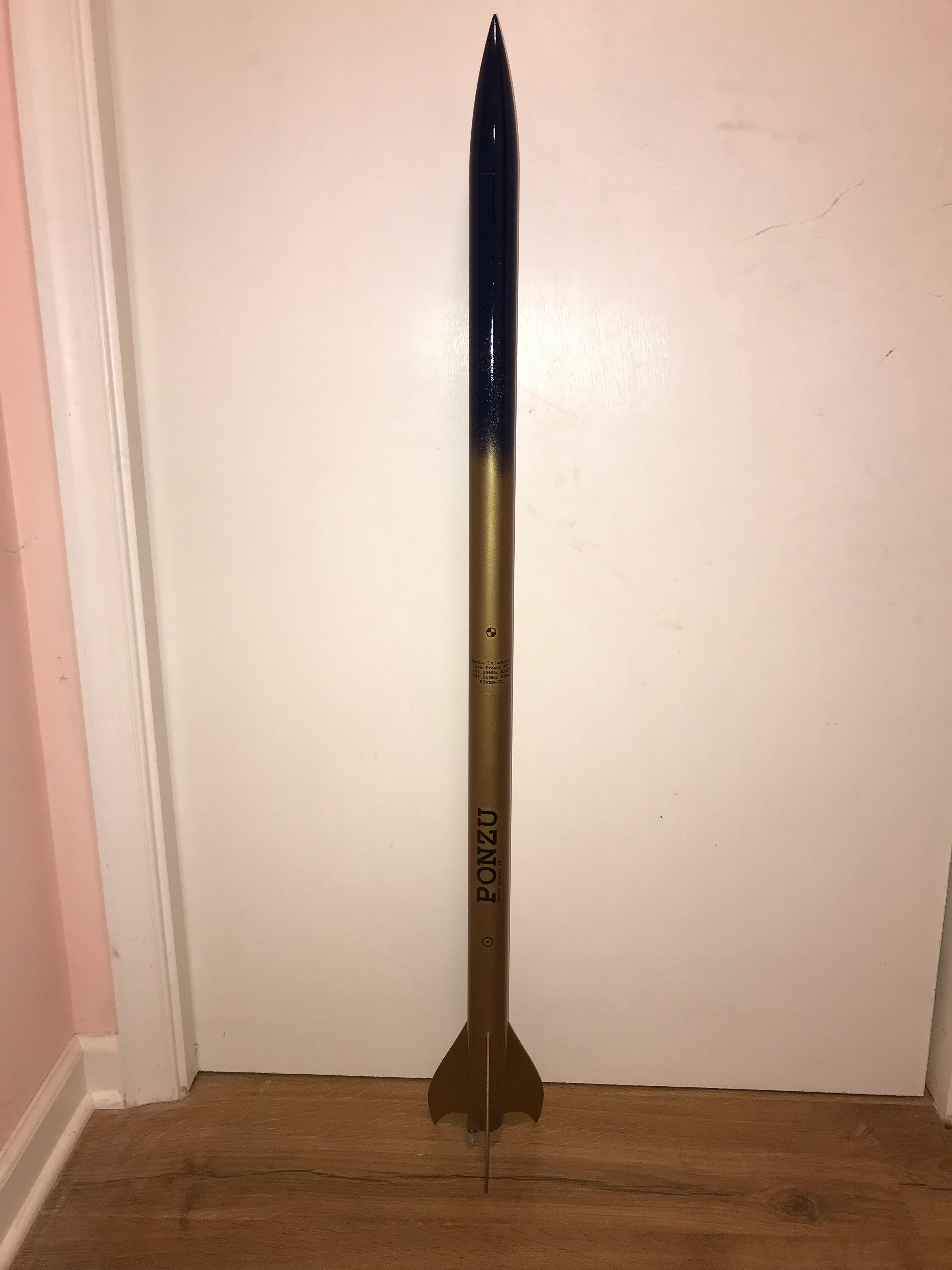
Height: 109.86cm ; 43.25” (+22.2cm ; +8.75” with payload extension for ESP32cam)
Diameter: 41.6mm ; 1.64” (BT-60 sized tube)
Launch Weight, w/o Motor: 487g ; 17.18oz (+95g ; +3.35oz with payload extension for ESP32cam)
Recovery: 30” parachute
Paint: Gold on the bottom 2/3, fading to blue with a spattered fade
Telemetry: GPS data via APRS packets (no digipeating) on 144.39MHz, and magnetometer, gyro, acceleration, barometric pressure, altitude, and messaging via LoRa on 434MHz. Flight data will also be posted live to Mastodon via the ground station’s ‘auto-tooter.’ Receipt of flight updates via XMPP are available upon request.
Check out my initial blog post detailing the beginnings of the Ponzu project here: Radio Rocket V3 Beginnings.
The versions of the radio rocket project are becoming more polished as we go. The major change in the electronics for Ponzu is that, after some encouragement by certain members of the Ham Radio Workbench Crew, we are moving away from the ‘breakout boards glued to a piece of wood’ construction, and have moved to custom designed PCB carriers. We’re still using a lot of breakout boards, but now instead of wires running back and forth, the circuit boards are the sled, and contain all of the power and data buses, so there are no more wires flopping around.
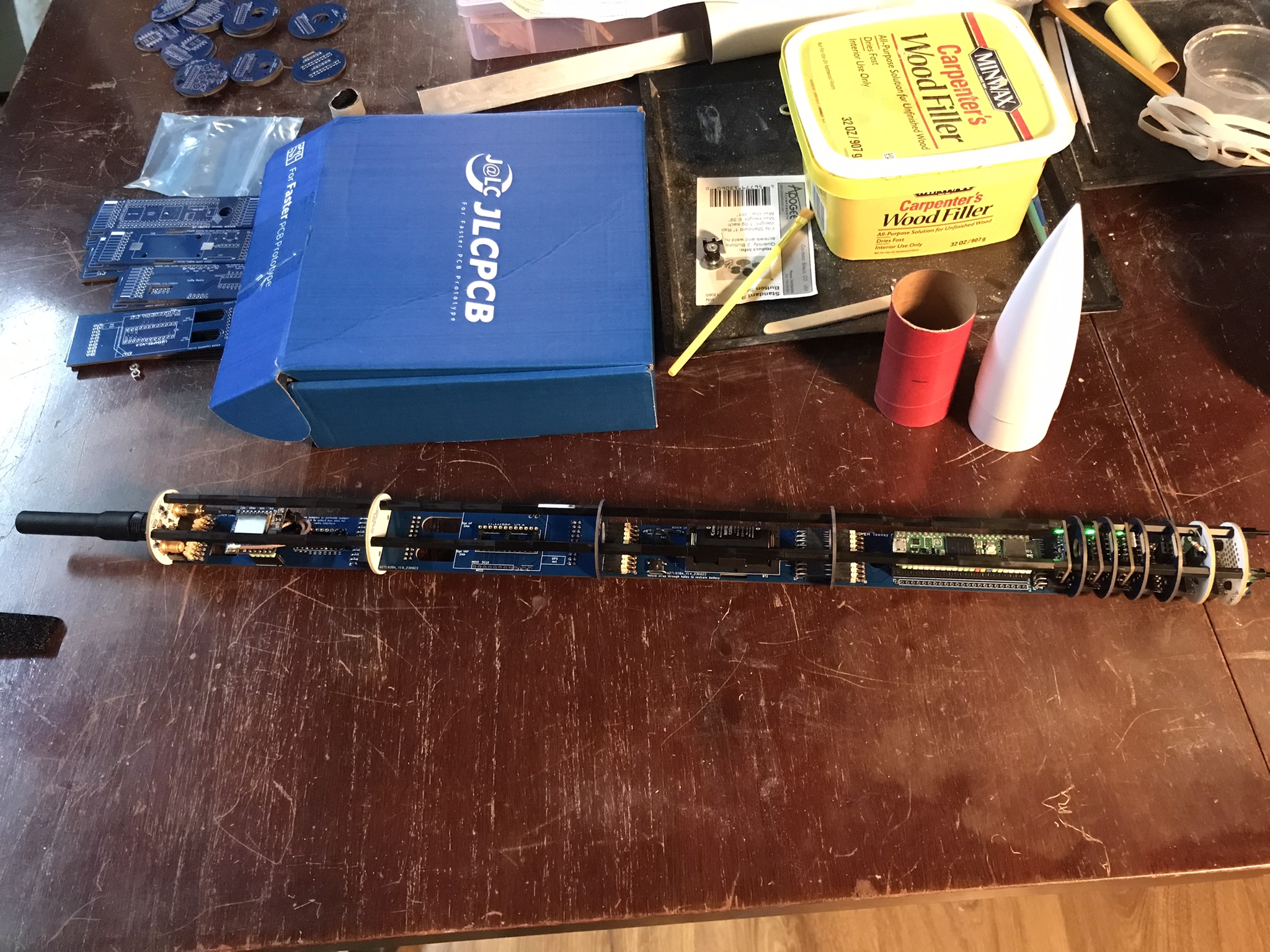
The ground station is also getting an overhaul. The hardware is still the same as the previous versions, but there are now some algorithms running to convert raw gyro and magnetometer readings into Pitch, Heading, and Roll so that the data means something, instead of just being raw sensor readings. There have also been changes to the UI to get the most meaningful stuff up front, with some other items moved off the main screen. Oh, and we’ve gone fully metric - it makes the math so much easier…
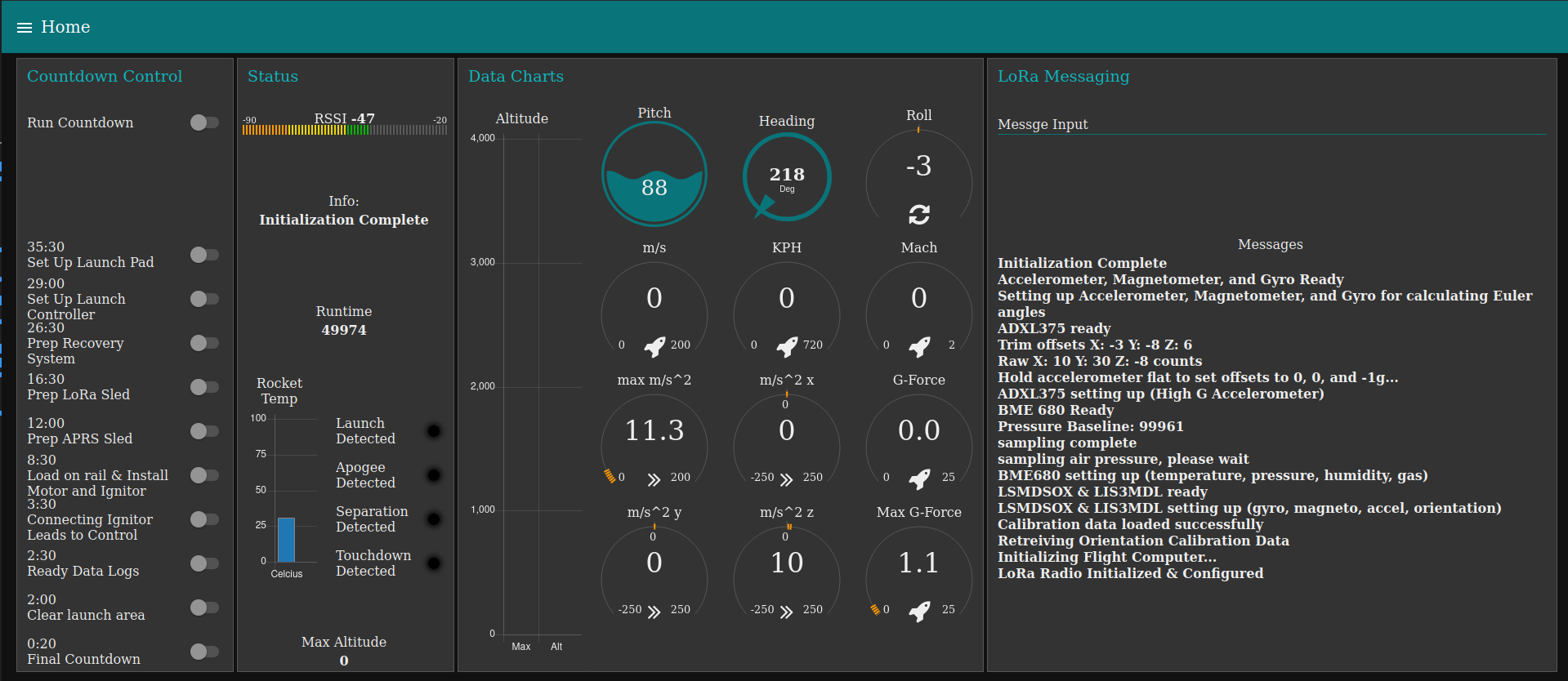
And last but not least, is the actual rocket. Ponzu is based on an Apogee Components Kestrel Kit, but made 9 inches longer by replacing the stock 9” long payload bay with an 18” long payload bay.
Launch Report
Our most recent launch took place on June 13th, and it was a big success! read the details and check out the video here!
Motor: G53FJ
Launch Weight w/o motor:487g ; 17.18oz
Altitude: 588.92m ; 1929ft
Max Velocity: 324kph ; 201mph
Max Acceleration: 179m/s^2 ; 18g (641.02m/s^2 ; 65g at parachute deployment)
Flight Time: 132s
Radio Rocket Ohyō (v2)
Radio Rocket version 2 was christened ‘Ohyō’ on April 5th, 2023.
Ohyō had 3 flights - one without the electronics payload, two with the electronics payload. It was a blast, and we got a done of fun data!
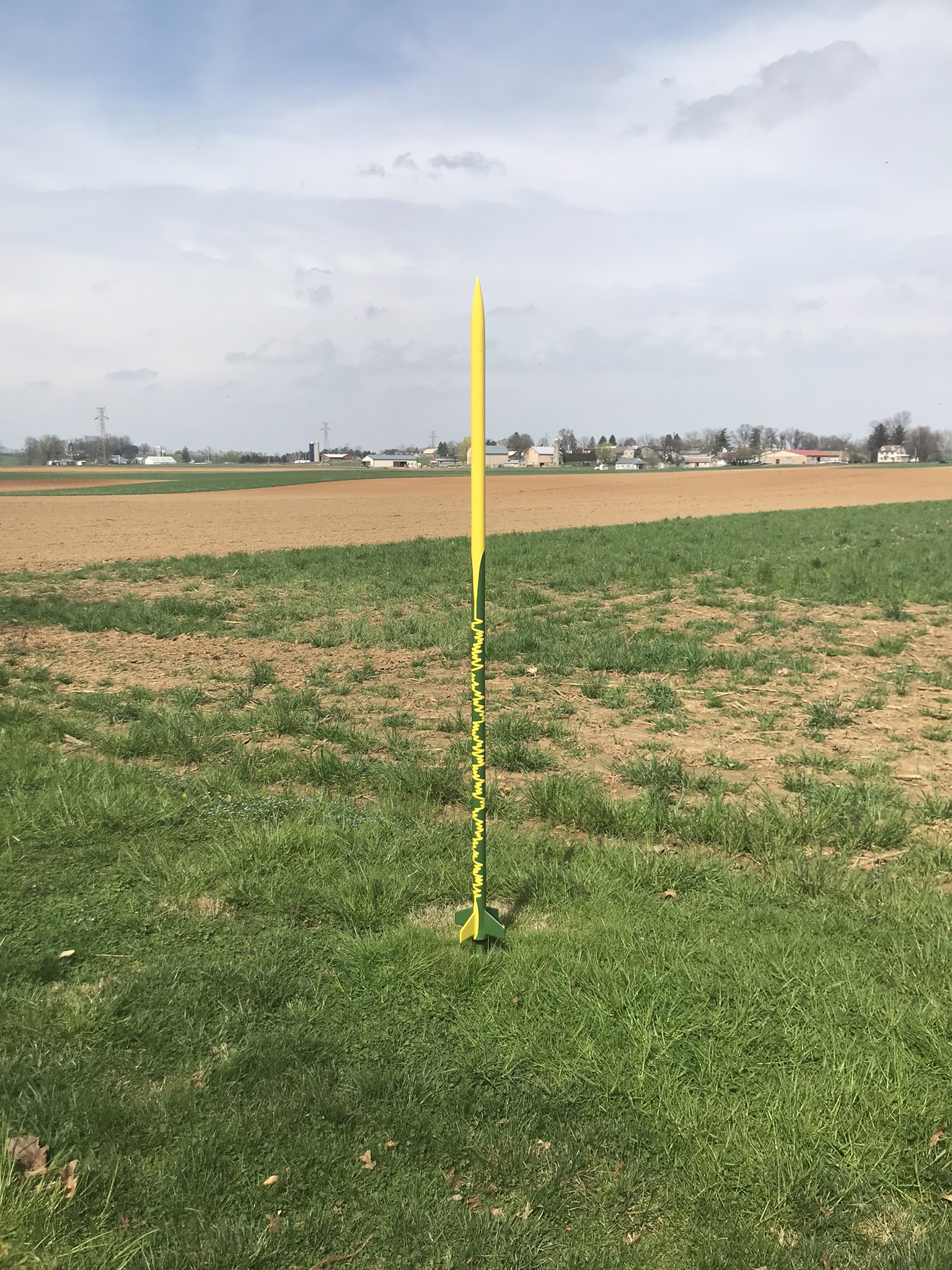
Height: 198cm ; 78”
Diameter: 38mm ; 1.5”
Weight, w/o Motor: 1,261g ; 44.5oz
Recovery: dual 30” parachutes
Paint: Yellow and Green, inspired by vintage RF spectrum analyzer traces
Telemetry: GPS data via APRS packets (no digipeating) on 144.39MHz, and magnetometer, gyro, acceleration, barometric pressure, altitude, and messaging via LoRa on 433MHz. Flight data will also be posted live to Mastodon via the ground station’s ‘auto-tooter.’
Launch 1 Report
Launch 2 Report
Launch 3 Report coming eventually, if at all :-P The tldr; is that the data and electronics worked great, but the rocket crashed. Luckily all the electronics survived the crash, and are now getting rebuilt into the system for version 3 of the radio rocket!
Radio Rocket Nigemono (v1)
Version 1 of the radio rocket, was named Nigemono posthumously
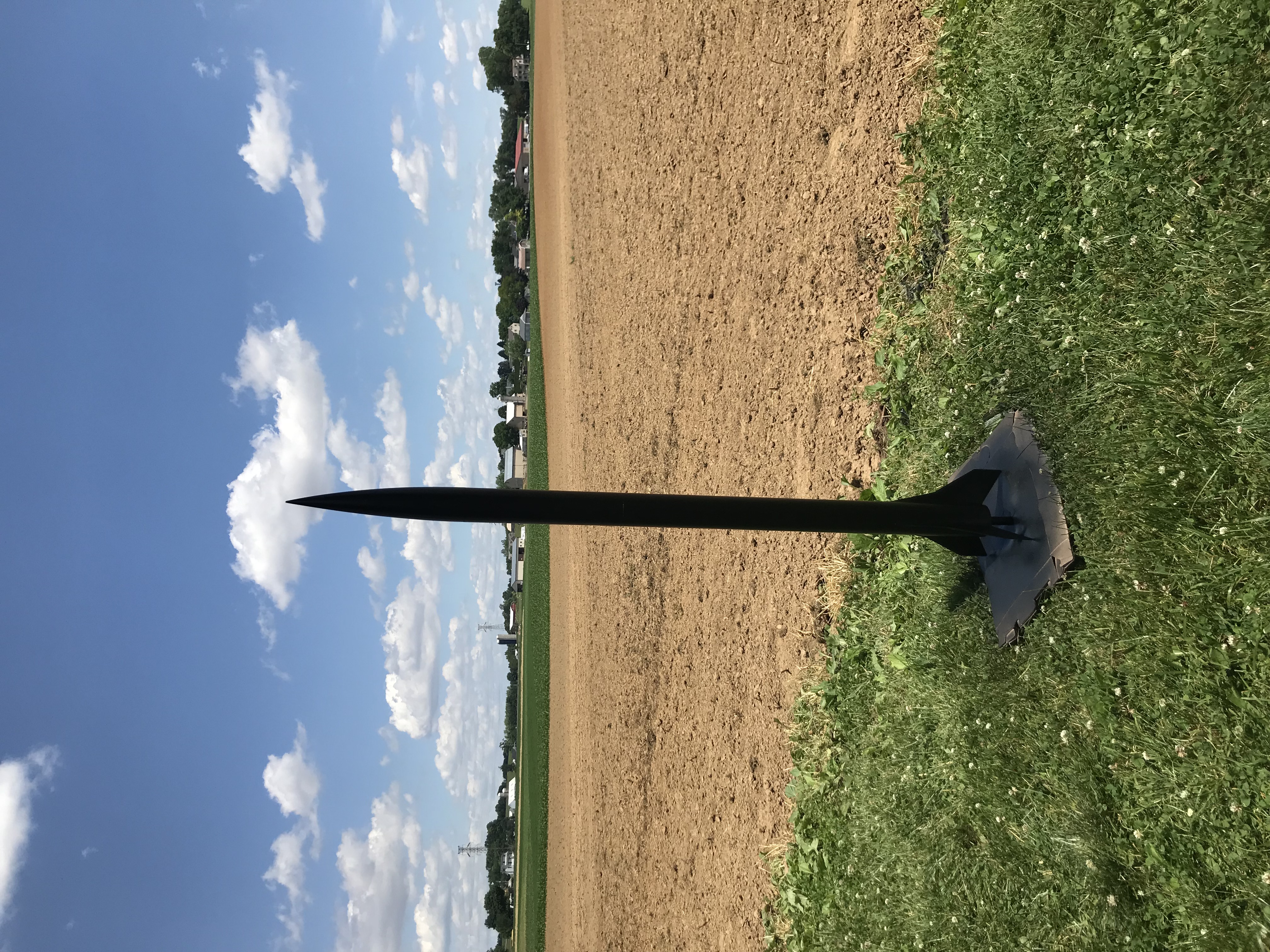
It was a modified mid-power Aerotech Initiator Kit, made longer to accommodate the electronics and antenna’s, and equipped with a larger than stock parachute because of the extra weight associated with the extra components. We crashed that one…
The Electronics Sled
The lead picture is of the electronics sled that was built for Ohyō, that slides into the rocket. This carries the LoRa radio and sensors for telemetry. The APRS radio is on it’s own sled, which is closer to the nose of the rocket.
APRS
Nigemono (v1) had a lightAPRS for APRS packets. I detailed in the lightAPRS groups.io group the modifications that I did so that I could get more packets through faster, since at the relatively low altitudes this rocket will reach, the flights will be short. Ohyō uses the very similar, but slightly different lightAPRS W-2.0.
LoRa
Onboard Ohyō is a Teensy 4.1 with a 70cm LoRa module and some other sensors. The LoRa radio allows the rocket to send telemetry data, and also receive some basic commands from the ground station, along with acting as a LoRa message repeater.
Ground Station
To communicate with the rocket, the current ground station is based on a Libre Computer LePotato single board computer, and a 70cm Adafruit Feather w/ LoRa, as the companion radio to the LoRa module on the rocket. It also contains an SDR dongle for receiving the APRS packets, and runs both a node-red server and packet modem server to share this data with other connected devices in the field (tablet, phone, laptop, etc.)